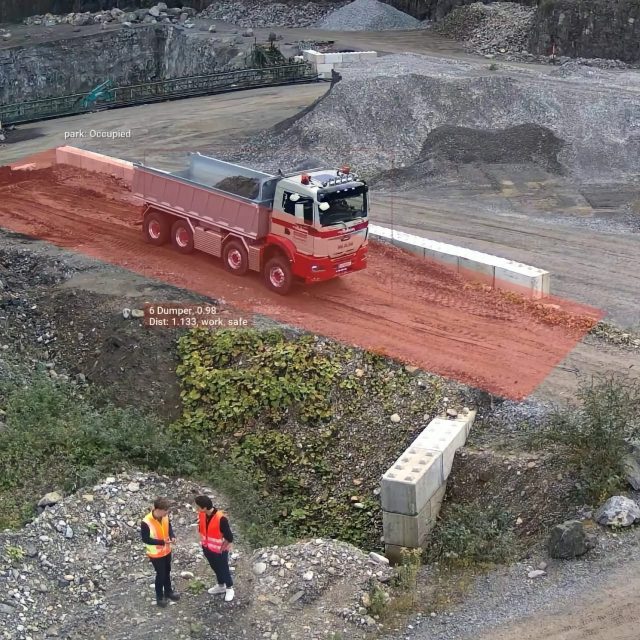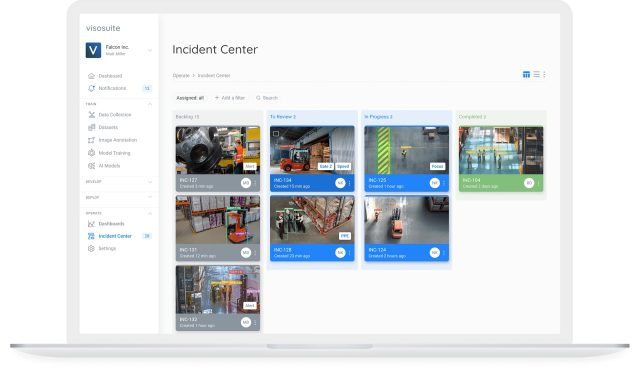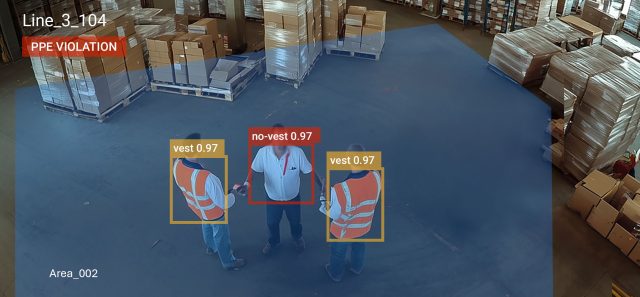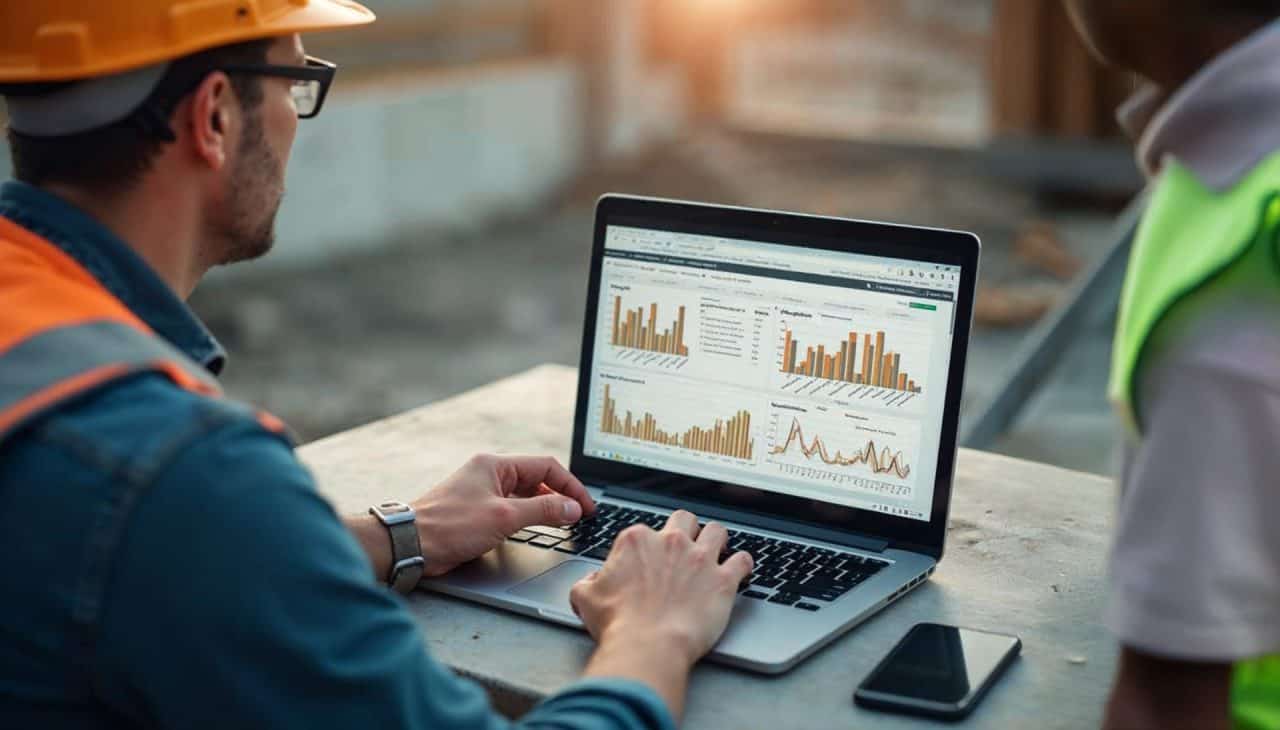Construction safety is today more than just a priority: it’s a persistent and complex challenge, with real human and financial consequences.
Construction sites experience injury rates four times higher than the average across all industries, with construction safety highly challenging. Across dynamic, ever-changing sites, from slip-and-trip and falls to equipment-related incidents and unauthorized zone entries, many accidents are often tied to preventable potential hazards:
- Fall hazards and working at height risks
- Struck-by and caught in/between incidents
- Electrical hazards and misuse of tools
- Lifting and related ergonomic injuries
- Poor visibility and obstructed views, and
- PPE (Personal Protective Equipment) non-compliance

For site managers, health and safety leaders, and project managers, this raises a critical question:
“How can we ensure construction safety compliance across unpredictable, high-risk environments, without slowing down operations?”.
This is particularly important across sites where health and safety teams may not be able to be present as often as they might want to be, and especially where they are managing multiple sites concurrently.
The answer is no longer found in the pages of traditional safety manuals or labor-intensive oversight routines. It lies in AI-powered computer vision: a fast-moving technology that’s already reshaping construction safety. It is how leading construction firms are keeping workers safer and projects on track.

Rethinking construction safety through smart eyes on site
Computer vision, when integrated with smart cameras, enables continuous, real-time safety enforcement. Instead of relying solely on random audits, manual observations, or after-the-fact incident reviews, these systems provide 24/7 visual intelligence at every corner of the site.
The result? A scalable, tireless safety layer that detects violations, issues instant alerts, and logs events automatically: all without bias or delay.
For construction safety-conscious companies juggling dozens of subcontractors, shifting site layouts, and high employee turnover, this shift from passive oversight to active safety monitoring is a game-changer.
Safety executives’ top challenges, and how AI Vision solves them
Health and safety leaders and project managers face a growing list of pressures:
- Rising compliance complexity, from local OSHA and ISO requirements to global contractor safety mandates
- Short-staffed safety teams, unable to maintain full coverage of sprawling or multi-site operations
- High variability in how safety standards are implemented across shifts or crews
- Insurance costs, increasing due to elevated risk profiles or incident history
- Demand for proof of compliance, requiring detailed, timestamped, auditable data
Traditional approaches – spot checks, safety talks, or clipboard audits – are reactive by design. By the time a violation is recorded, the risk or incident has already occurred.
AI Vision systems remove this lag. They analyze every frame of video, detect breaches as they happen, and integrate seamlessly with digital safety platforms to provide real-time alerts and compliance reports.

The quickest wins: what AI Vision catches instantly
Construction leaders are already deploying AI Vision for targeted use cases that deliver quick wins and measurable improvements:
1. Hard hat and vest detection
Smart cameras are trained to recognize required safety gear like hard hats, vests, goggles, or gloves. When a worker enters a zone without the proper PPE, an alert is sent to supervisors or even displayed live on jobsite signage.
Why it matters: PPE violations are consistently among the top OSHA citations. Automating their detection reduces exposure and makes enforcement consistent and unbiased.
2. Fall risk assessment
AI models can recognize movement patterns associated with fall risks – such as unstable climbing, improper ladder use, or dangerous proximity to elevated edges – often before a fall occurs.
Why it matters: Falls, slips, and trips account for more than one-third of all construction fatalities. Real-time alerts allow early intervention, not just investigation.
3. Restricted area monitoring
AI Vision defines virtual safety zones and flags when unauthorized personnel enter danger areas, such as crane swing zones, demolition areas, or electrical enclosures.
Why it matters: Sites change daily. Signage alone can’t enforce access, especially when contractors or temporary workers are involved.

The numbers tell the story: proven ROI in safety
When AI Vision is deployed effectively, the return on investment (ROI) isn’t just theoretical: it’s tangible:
- PPE compliance – 300%+ increase within 90 days
- Safety incidents – 80-90% fewer incidents in AI-monitored zones during pilot periods
- Insurance premiums – 15–25% reduction, driven by verifiable risk mitigation
- Near-miss documentation – 5x improvement, enabling better training and forecasting
For safety executives, the financial logic is clear: the cost of a single serious incident or fatality dwarfs the investment in proactive AI systems. And beyond finances, there’s the reputational benefit: demonstrating leadership in digital transformation and safety innovation.
Why traditional safety tools are falling short
Paper-based audits, mobile inspection apps, and site patrols play a role, but they can’t scale at the speed or granularity required today. The sheer size, dynamic nature, and complexity of many construction operations make manual oversight incomplete and inconsistent.
AI Vision offers a way to extend your safety team’s reach: not by replacing humans, but by enabling them to focus where their expertise is most needed.
And because computer vision captures continuous data, it also feeds into higher-level initiatives like predictive risk modeling, contractor safety benchmarking, and digital root cause analysis.
Building trust: privacy by design
One concern often raised is worker privacy. Nobody wants to feel watched, monitored by CCTV, or under scrutiny 24/7.
Leading AI Vision platforms address this by offering edge-based deployment (footage is processed locally and not saved), anonymized behavior detection, and clear policy frameworks involving unions and workers from the start.
These platforms don’t track individuals by name: they track unsafe conditions and behaviors. And by prioritizing transparency, they help create a culture of collaboration and accountability, not punishment.
What’s next: AI Vision as a safety co-pilot
As the technology matures, AI Vision will become more than just a detection tool.
It’s evolving into a decision-support system that augments human expertise and empowers safety leaders.
Future-ready construction firms are already planning for:
- Predictive risk modeling using video trends and metadata
- Cross-site safety benchmarking and KPI dashboards
- Wearable and drone integration for real-time, 360° site intelligence
- Automated incident classification and digital root cause tracking
AI Vision is no longer about “if” but rather “when”. It’s a choice that is essential and one that offers a competitive advantage to those who are deploying it now.
Final word: build safer, smarter, and stronger
The benefits are clear. AI-powered computer vision helps construction safety to:
- Dramatically improve PPE and behavioral compliance
- Reduce incidents, near-misses, and downtime
- Lower insurance premiums and legal risk
- Strengthen data-driven safety culture across projects
For forward-looking safety professionals, this is more than a technology investment: it’s a strategic advantage.
The time to move from reports to real-time is now.
